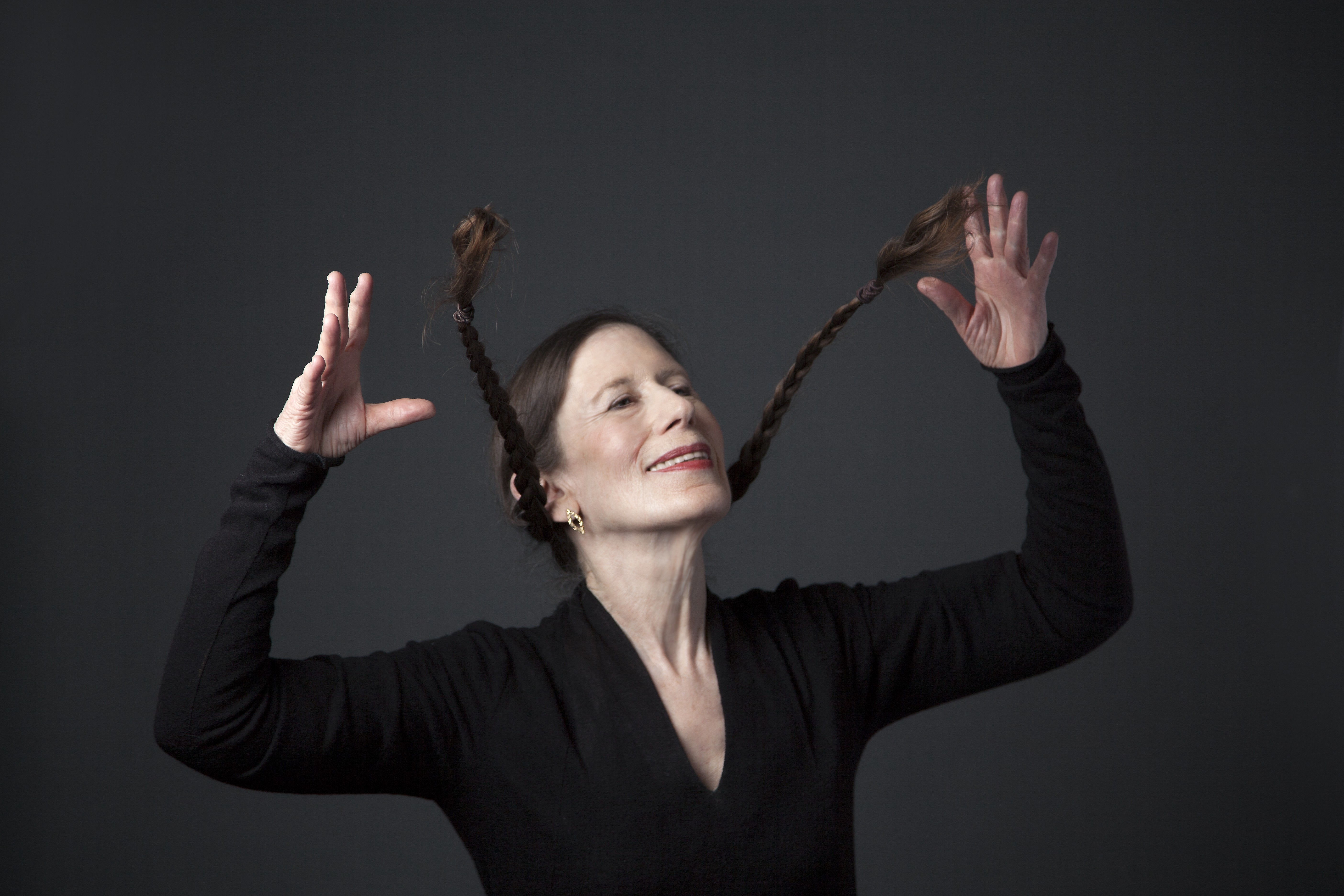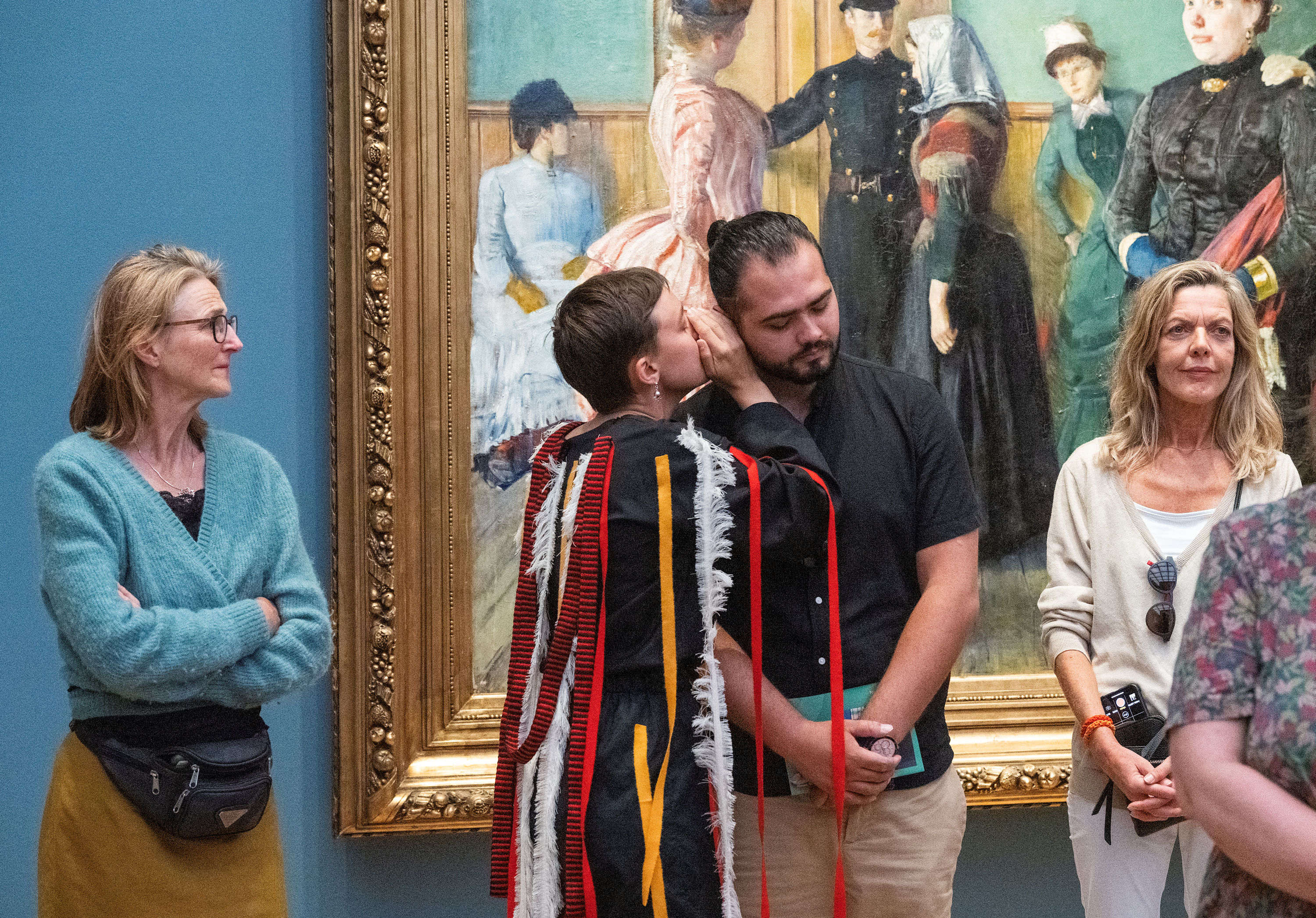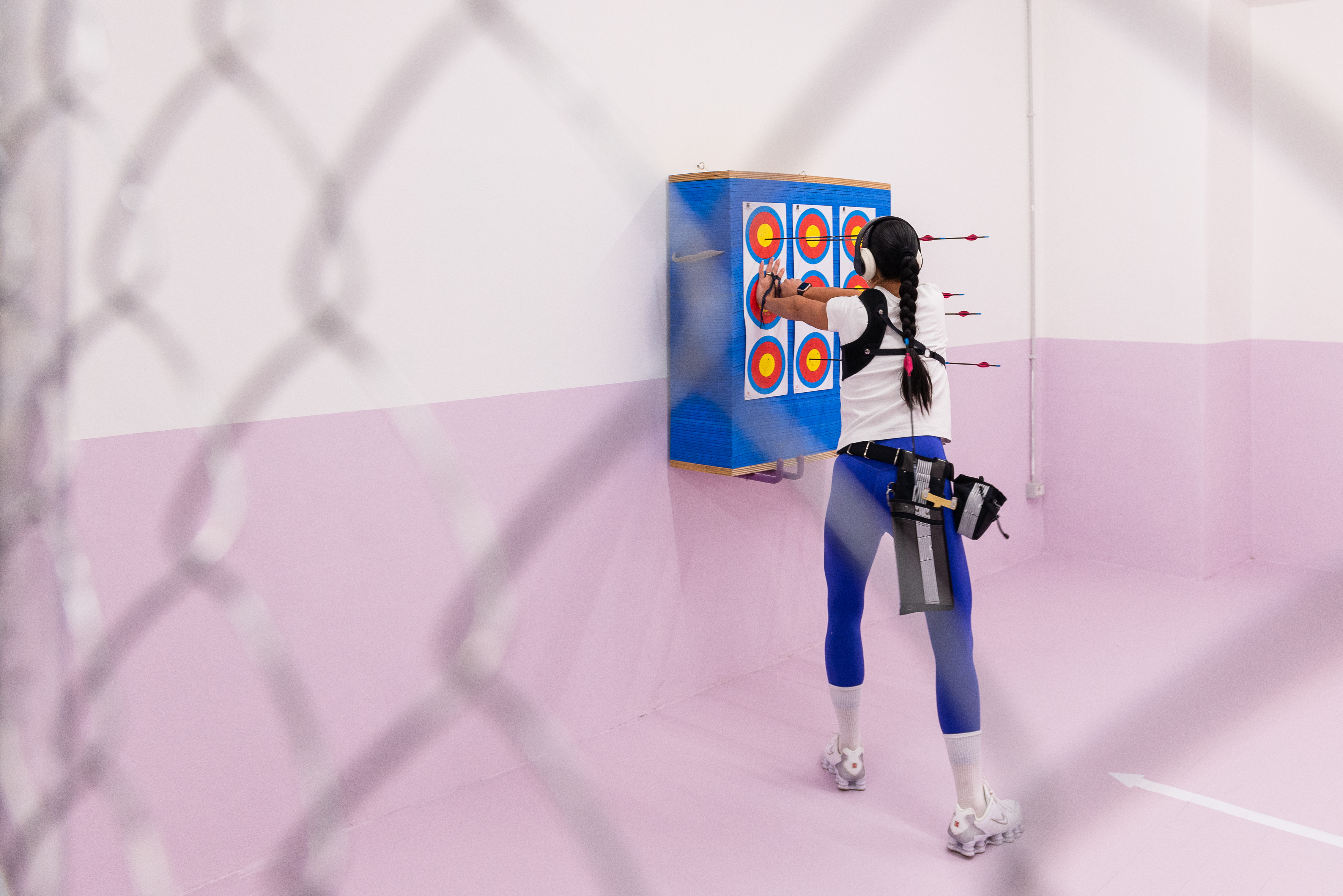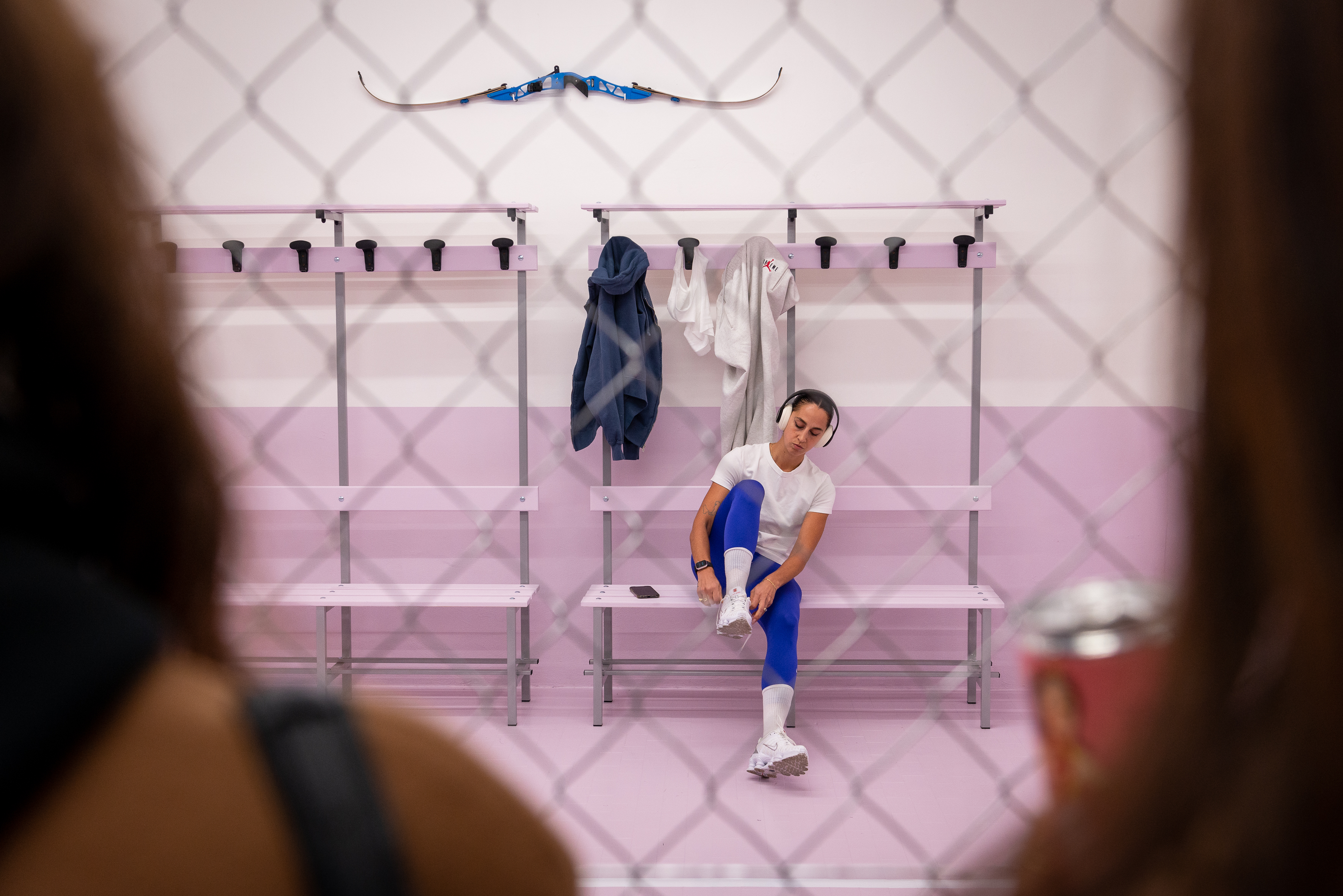Whitehot Magazine
October 2025
"The Best Art In The World"
"The Best Art In The World"
October 2025
Being ‘In the Moment’ at the National Museum of Norway: An Interview with Curator, Geir Haraldseth and Contributing Artist, SAGG Napoli
 Meredith Monk © Photo: Christine Alicino.
Meredith Monk © Photo: Christine Alicino.
By GRACE PALMER October 25, 2025
“When you start worrying about form, you’re not in the moment.” Meredith Monk’s statement encapsulates the curatorial vision of the National Museum of Norway’s upcoming showcase, 'In the Moment'. Taking place between 25 and 26 October, this weekend programme celebrates the diversity and creativity of performance art, exploring the nuances of the genre. Bringing together three innovative and distinctive performance artists - Meredith Monk, SAGG Napoli, and Elina Waage Mikalsen - ‘In the Moment’ will showcase the heterogeneity of performance art, highlighting its emotional depth and adaptability. Spanning different generations and styles, Monk, Napoli, and Waage Mikalsen offer profound insights into the enduring significance of this medium. Monk will present a concert performance, alongside her vocal ensemble Katie Geissinger and Alison Sniffin, that demonstrates the multifaceted instrumentation of her voice; while Napoli will share her work, I thought I had no rage left in my body; turns out it was sitting in different places. Additionally, Waage Mikalsen will lead an institutionally critical engagement with the museum’s collection. Together, these artists demonstrate the prescient social and personal relevance of performance art. Throughout the weekend, several seminar panels will feature speakers from the Tate, MoMA, and Moderna Museet, who will discuss the relationship between performance art and institutional practices, reflecting on the medium’s production, collection and conservation. Uniting key innovators in curation and preservation, alongside these dynamic performers, ‘In the Moment’ dismisses the rhetoric of form and embraces immediacy, diversity, and uniqueness. I had the opportunity to speak with Geir Haraldseth, curator of 'In the Moment', about the showcase's direction and message, as well as SAGG Napoli, who shared more about her contribution and the power of reconnecting with our embodied emotions.
 Elina Waage Mikalsen. Photo: Nasjonalmuseey/Annar Bjørgli.
Elina Waage Mikalsen. Photo: Nasjonalmuseey/Annar Bjørgli.
As Curator of Contemporary Art at the National Museum of Norway, Geir Haraldseth has spent the past decade advocating for Norway’s emerging art scene. For his 2022 survey exhibition 'I Call It Art', created for the museum’s new building, Haraldseth “took the pulse” of contemporary art in Norway, curating a reflective show that explored the banal, personal, abstract, and alternative. In addition to his curatorial work, Haraldseth has contributed to several publications, including Art in America, the Exhibitionist, and Acne Paper. I spoke with Haraldseth about the process behind ‘In the Moment’, the importance of contemporary and institutional collaboration, and what legacy he hopes such an event will leave behind.
Palmer: ‘In the Moment’ is a direct and unique title for your weekend showcase. What drew you to this phrase?
Haraldseth: The title is taken from an interview with the artist Meredith Monk, who will take part in the inaugural iteration of this program. I was drawn to the phrase because it points to the moment of the performance, and of any live work, and of course, to how we live our lives. The phrase also opens up important questions about what happens before and after this moment, especially when we are considering the artists working in performance, and the institutions that are showing, collecting, commissioning, and hopefully caring for these works.
Palmer: Why do you believe now is an important moment to reflect on the legacy of performance art? What do you think might be missing in our understanding of the history of the medium and how it is being preserved?
Haraldseth: I am happy to see that there is so much performance work happening across institutions, from the smaller artist-run spaces to larger institutions. This proliferation has to be addressed from an art historical point of view, and there are already many ways of looking at performance work, including RoseLee Goldberg and Claire Bishop from the field of visual art. The museum wanted to take a look at the genealogies of performative work and its relationship to the museum, how they might have influenced each other, or what is missing in the conversation when inviting performance artists into collecting institutions. The word performance is in itself also interesting to look at again, and when a term like performance art took over from a plethora of other terms, such as Happenings, extended time pieces and actions. Words shape how we think. The term performance might work so well because it is so broad and a great umbrella term. But how do we approach the diversity of practices and approaches under this umbrella?
Palmer: Staging this event at the National Museum of Norway offers an interesting dichotomy, particularly in terms of the traditional curatorial design and conservation practices of the museum’s extensive collection, in comparison to performance art’s inherent irregularity and unpredictability. What do you hope the public gains from experiencing this dichotomy?
Haraldseth: We are hoping to invite in not just curatorial knowledge from the museum, but also conservation, production, installation, registrars and other professions working at the museum. The curatorial programming is one part of this, of course, and we have invited both collecting museum institutions like MoMA in New York and Moderna in Stockholm and non-collecting institutions like Kunsthall Bergen to share their histories of working with and programming performance works. I hope the public will, first and foremost, engage with the works on display and then maybe consider the institutional context; what is different or similar to a concert, a theatre piece, a guided tour or a rage room.
Palmer: Meredith Monk, SAGG Napoli and Elina Waage Mikalsen are fascinating and diverse inclusions for this weekend showcase. What drew you to their work, and why do you think they are some of the best examples to highlight the diversity of the performance medium?
Haraldseth: The diversity of practices was important to us. Monk gives us a glimpse into a practice which has been persisting and developing for decades. The artist has carved out their own space and influenced how we think and talk about performative works. A true legend! Waage Mikalsen might share some similarities with Monk, as they both work with their voice and narrative. I think that their perspective, as an indigenous artist, speaks to what challenges the museum might pose to performative practices, not just structurally, but also ideologically. Napoli points to a physical and athletic approach to performance. Testing the limits of the body, endurance-wise, has a history in performative works, but I believe SAGG Napoli comes at this from a different angle, linking her very contemporary practice to ideas of athleticism all the way back to the Roman era.
Palmer: What legacy do you hope this event leaves behind for performance artists both in Norway and internationally? Is there a future for performance art within these institutional contexts?
I sure hope there is a future. There is a current interest in Infrastructural Critique, as theorised by Marina Vishmidt, which many artists have been exploring in the last few years. For the museum to show and care for these new practices, we must be able to understand them and figure out how to negotiate spaces and resources not conventionally meant for creating and showing art. The Norwegian art scene is very active, and I hope, over time, that the museum will be able to be in conversation with many of these practices, one moment at a time.
 SAGG Napoli, Sempre Contratta, 2024-25, installation view. Courtesy: the artist and Basement Roma.
SAGG Napoli, Sempre Contratta, 2024-25, installation view. Courtesy: the artist and Basement Roma.
Multidisciplinary artist and performance athlete SAGG Napoli is a tour de force of resilience, patience, and transformation. Reflecting on her Southern Italian heritage and her personal experiences with class, gender, and cultural stereotypes, Napoli’s performances create embodied experiences that are both personal and socially engaged. Her 2024 solo exhibition, Sempre Contratta, at Basement Roma showcased Napoli’s innovative and physical performance practice, which merges her artistic creativity with her athletic disciplines, particularly through archery. In addition to her performance work, Napoli uses spoken word poetry to critically examine themes such as memory, control, and self-reflection. I spoke with Napoli about her performance for ‘In the Moment’, the significance of reconnecting with our bodies, and the power of rage as a form of resistance.
Palmer: I thought I had no rage left in my body; turns out it was sitting in different places is an arresting and thought-provoking title for your installation performance for 'In the Moment' at the National Museum. How does rage manifest for yourself? Is your relationship to rage built upon reclaiming the emotion, or perhaps harnessing the potential benefits of its energy?
Napoli: Rage is something sedimented in the body long after the initial injury or injustice has passed. It sits in the muscles, in the stomach, behind the jaw. I'm not interested in performing rage as spectacle, but in tracing where it hides, how it mutates into discipline, protection, or silence. Reclaiming rage is about learning to coexist with it, to use it to one's advantage rather than annihilation.
Palmer: Your performance requires its participants to engage in short physical activities once they enter the 'rage room'. Does this physical engagement encourage its participants to expel their rage, or rather, a means of relinquishing it from being trapped beneath the surface?
Napoli: The body remembers what the mind edits out. This site-specific work is an invitation to locate where that tension lives. It's about taking a few minutes with it, learning to identify which other emotions are connected to it, and working with it rather than against it. In the past few years of actively working on myself, I've learned that sometimes a few minutes of exercising can make the difference between an okay day and a very bad one.
Palmer: What drew you to get involved with the National Museum of Norway's performance event? What value do you think performance art has in the 21st Century, especially through its relationship to institutional practices?
Napoli: I was genuinely excited to be invited to take part in this series of performances. I'm not overly concerned with the institutional frame; what matters to me is finding the most effective way to get a message across. Sometimes that's through a performance, sometimes it's through an Instagram story. The medium shifts, but the urgency stays the same.
Palmer: How important is the public to your practice? What do you hope people will feel and gain from engaging with this experience?
Napoli: The public is central to my practice. I don't make work only for myself; I feel a responsibility to use the tools I've acquired over the years in ways that can resonate outward. There's a recognition in my work that healing and rupture are not opposites. I hope people leave less certain but more aware of what's moving inside them.
 SAGG Napoli, Sempre Contratta, 2024-25, installation view. Courtesy: the artist and Basement Roma.
SAGG Napoli, Sempre Contratta, 2024-25, installation view. Courtesy: the artist and Basement Roma.
Palmer: Your solo show, Sempre Contratta, at the Basement Roma saw you stage your body as a sculptural device for healing. Is this new installation for the National Museum, your offering to the public to transcend their bodies as a means of self-transformation and emotional healing?
Napoli: Perhaps not transcendence, I’m more interested in staying with the body rather than escaping it. The installation invites people to inhabit their physicality more truthfully, to see where emotion lives within it. Healing, if it happens, is not a destination but a reorientation, a return to the body. But I'm not counting on it; that's a long journey.
Palmer: How has your performance practice allowed you to bring more awareness to your experiences of borderline personality and bipolar disorder? Do you hope that through the images and words shared on your social media platforms, you are helping to destigmatise these disorders?
Napoli: I don't just hope, I think that's exactly what's happening. The more people speak about something, the easier it becomes for others to speak too. Resistance comes in different forms.
Palmer: What does the phrase being 'In the Moment' mean for you?
Napoli: It means I am here, right now, and I've got something to say. And I've been lucky enough to be given a platform to say it.
My thanks go to both Geir Haraldseth and SAGG Napoli for their insightful words and for taking the time to reflect on this upcoming showcase. I would also like to share my appreciation for the National Museum of Norway and Rel Hayman of Pelham Communications for making this all possible.
‘In the Moment’ runs between October 25 – 26, 2025, at the National Museum of Norway, Oslo WM

Grace Palmer
Grace Palmer, an art historian and writer, specializes in the history of contemporary art and 1960s New York performance art. She contributes to Whitehot Magazine and is currently located in London, England.
view all articles from this author








